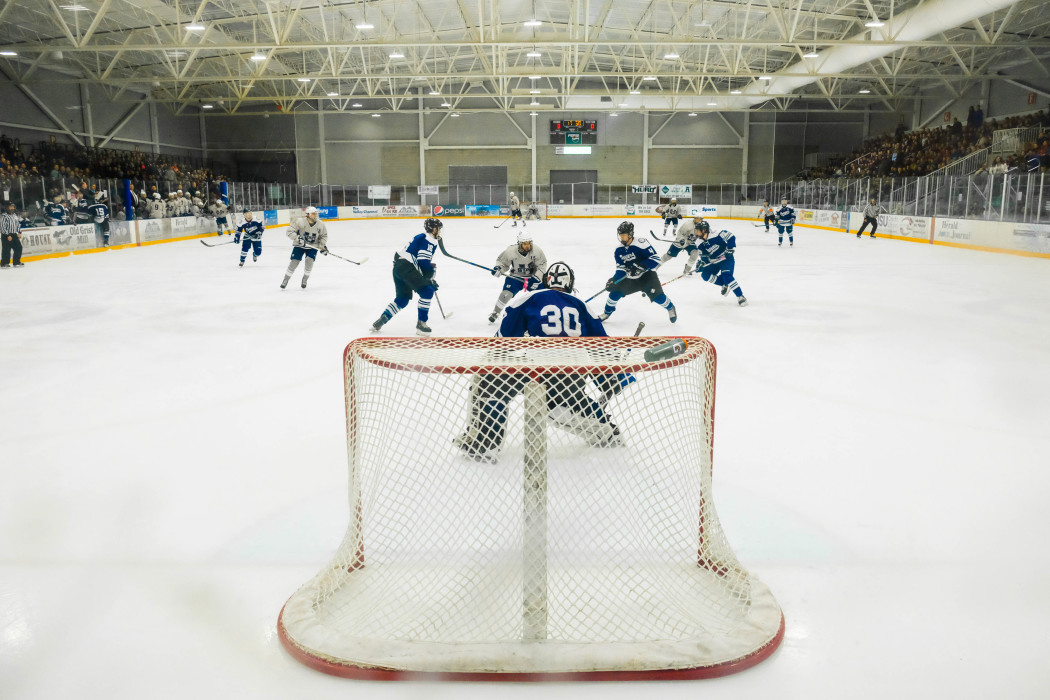Club Sport Fund to create opportunities for student-athletes
In one of his last initiatives as student body president, Trevor Sean Olsen is sponsoring legislation to create a club sport fund.
As they currently stand, club sports — including hockey, baseball and lacrosse — are not part of the Athletics Department. The only funds they receive from the university come from Capital & Support, a student government-sponsored source of one-time funding granted to student groups meeting certain criteria.
As several of the clubs have grown more competitive the past few years, they have qualified for nationals — an opportunity that can cost teams thousands of dollars.
“I think them paying dues and paying for their own trips and equipment all shows that they’re invested,” Olsen said. “If we made them, they would find a way to pay their own way.”
Olsen is hoping these student-athletes will be able to compete without too much personal sacrifice. USUSA officers took the first step in creating the club sport fund this week, and — with the help of university administrators — club sports will be able to afford to compete.
“I don’t think people realize how it works when you’re competing at a national level. Weber organizes their money so much differently — Weber embraces it and USU struggles with it,” said men’s soccer coach Shawn Casey. “If there was a slush fund that would be great.”
Before the clubs are given funding for nationals, they must demonstrate fiscal responsibility and academic success. Teams must carry a minimum average GPA of 2.5.
“If they’re not focusing on their academics, they shouldn’t be spending a week or two at nationals,” Olsen said.
Student government officers are hoping to create a fund of $40,000; after their legislation passed in executive council on Tuesday, $10,000 from Capital & Support are being allocated to the fund. Officers are hoping James Morales, Vice President of Student Affairs, will match that. Central administrators like David Cowley may then contribute $20,000 to the pool. For now, the only dollar amount set in stone is the $10,000 from USUSA.
On average, club sports have requested about $8,000 from Capital & Support the past few years. Once they find out they qualify for nationals, they have about 10 days to raise the money for transportation and housing. This often involves talking to key donors.
“Donors giving to these clubs get hit up quite a bit. If we ask them to contribute an amount to this fund every year, it will also improve donor relations,” Morales said.
There was talk of creating a club sport fund several years ago, but now that students are showing their support, central administrators are more interested in creating the fund.
“If you want to buy a pizza and your friends all say, ‘We’ll chip in a dollar,’ the likelihood that you’ll chip in a dollar now is better, because there’s a partnership of people that want to make this happen,” Morales said.
There was concern from the USUSA Academic Senate that student government wasn’t showing enough support for academics.
“I appreciate the dissenting vote because I appreciate being able to get multiple opinions. I do think that this in itself is important, and I think we should focus on academics,” Olsen said. “I don’t think we should look at these as one or the other. That’s kind of what’s happening.”
He said he thinks the purpose of the activity fee, which is where the student involvement budget comes from, is to enhance student life outside the classroom, and that can include providing opportunities for student-athletes. To support academics as well, however, USUSA officers are moving $10,000 from Capital & Support to the Academic Opportunity Fund, an account that frequently taps out early in spring semester.
“We’re focusing on both sides. I’m going to do whatever I can, even if I don’t have much time left, to make sure students get all the opportunities they can have,” Olsen said.
— brennakelly818@gmail.com
@bckelly8

